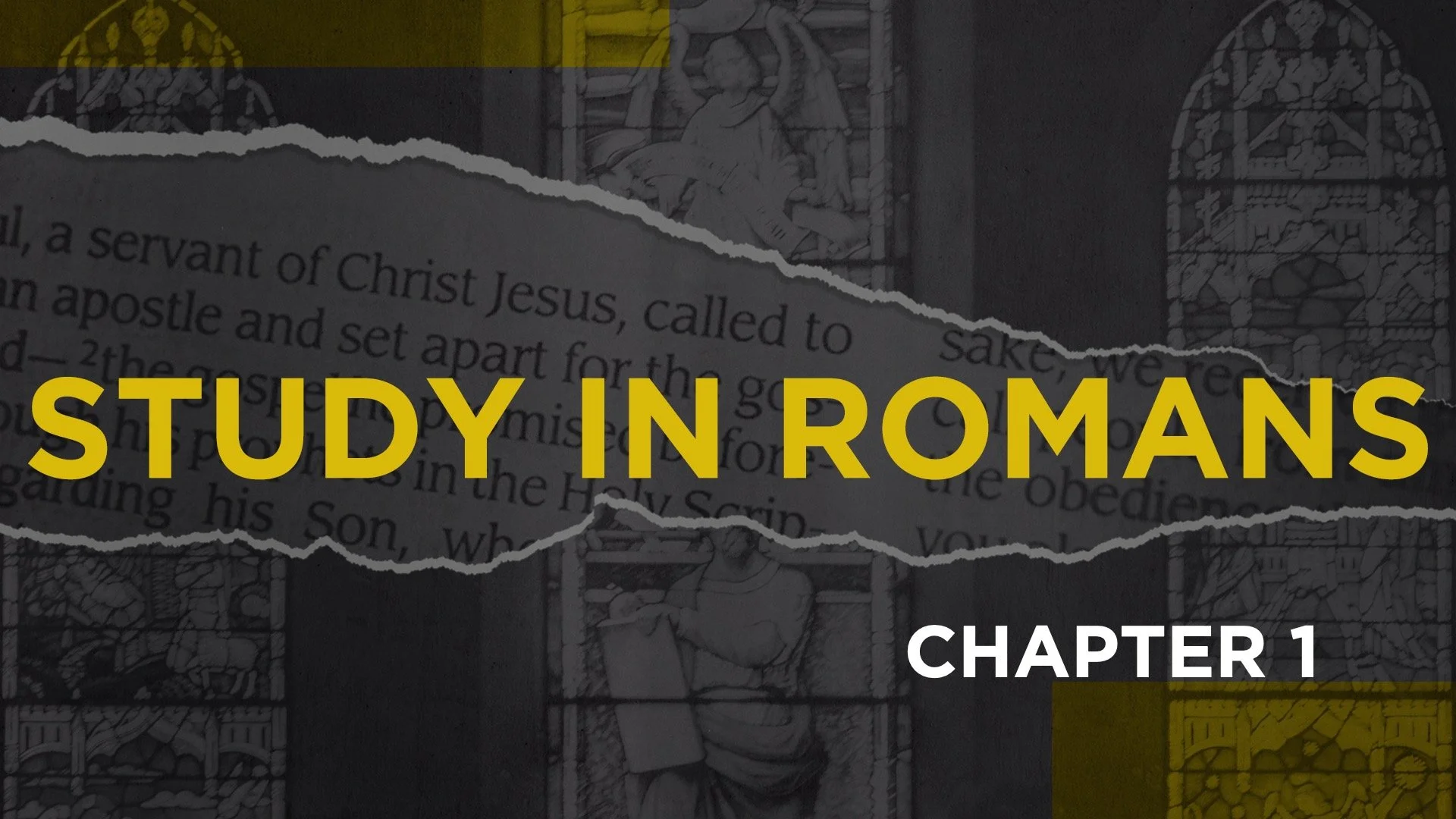The Identity of Melchizedek
Click below to access (from the 1979 archives!) a research paper from Mike Gaston on the identity of Melchizedek.
Ruth
What is Baptism?
Baptism is an ordinance (or sacrament) of the Church that, primarily signifies union with Christ declaring the believer’s faith in and identification with Jesus’ death, burial, and resurrection. Galatians 3:27 teaches us that those who have been “baptized into Christ have put on Christ.”
Baptism is an act of obedience to the command of Jesus2 in which the believer demonstrates an outward witness of an inward faith in Jesus Christ alone for salvation.
One early church leader Augustine called baptism a “visible word” drawing attention to the fact that baptism is a picture of the gospel and that without the gospel, it is little more than a ceremonial show.
What Does Baptism Look Like?
In baptism, someone is proclaiming that Jesus Christ is the Son of the living God and that He is the Lord and Savior of their life. That person is then fully and momentarily immersed under water symbolizing their union and relationship with Christ in his death and burial – being baptized “in the name of the Father, and of the Son, and of the Holy Spirit” – and then raised up out of the water symbolizing their union with Christ in his resurrection as well their being raised to walk in newness of life. While immersion may not be the only form of baptism, it is the form that seems to most fully preserve and accomplish the meaning of baptism (i.e. union with Christ) for the following reasons:
The Greek word baptizo means, most simply, “to plunge, dip, or immerse” something in water.
Immersion seems to be required in several instances of baptism in the Bible:
Mark 1:5 – people were baptized by John “in the river Jordan.”
Mark 1:10 – when Jesus himself was baptized, “he came up out of the water.”
Acts 8:38-39 – Philip and the Ethiopian eunuch “went down into the water” and “came up out of the water.”
The symbolism of union with Christ in his death, burial, and resurrection seems to require baptism by immersion as Romans 6:3-4 states,
“Do you not know that all of us who have been baptized into Christ Jesus were baptized into his death? We were buried therefore with him by baptism into death, in order that, just as Christ was raised from the dead by the glory of the Father, we too might walk in newness of life.”
In similar fashion, Colossians 2:12 speaks of Christians as “having been buried with him [Jesus] in baptism” as well as being “raised with him through faith.”
Why Do We Baptize?
Being baptized does not make someone a Christian. Likewise, not being baptized does not cause someone to stop being a Christian. Yet all Christians should be baptized as a matter of obedience to Jesus’ command in Matthew 28:19-20.
In addition, it is almost universally agreed that baptism is in some way connected with the beginning of the Christian life, with one’s initiation into the universal, invisible church as well as the local, visible church.
Finally, the rite of baptism serves as a means of grace acting as a form of proclamation confirming one’s salvation to oneself and affirming it to others. On this point, one theologian writes:
“There is the blessing of God’s favor that comes with all obedience, as well as the joy that comes through public profession of one’s faith, and the reassurance of having a clear physical picture of dying and rising with Christ and of washing away sins. Certainly this Lord gave us baptism to strengthen and encourage our faith – and it should do so for everyone who is baptized and for every believer who witnesses baptism.”
Who Should Be Baptized?
The subject of baptism should be someone who desires to follow Christ, desires to be baptized, lives consistently with an earnest confession of sin and repentance, and holds a faith in Christ’s life, death and resurrection for him.
The clear and consistent evidence of Scripture points to the subjects of baptism being those who have experienced new birth on the basis of faith.7 They should be able to communicate a credible profession of faith as well as exhibit credible evidence of regeneration.
By “credible profession of faith” we mean a right understanding of the gospel, that we are saved by grace alone through faith alone in Jesus Christ alone and not of our own works.
Though we cannot “see” regeneration and salvation, we can see the effects of it. Those who are to be baptized should not simply be able to rehearse some facts about the gospel, they should also exhibit “credible evidence of regeneration.” Some of the biblical evidences of regeneration include:
- Repentance from sin (1 John 1:5-10)
- Deep love and affection for Jesus (1 Peter 1:8)
- A decreased appetite for sin as new inclinations and desires replace old ones (2 Cor. 5:17, Eph. 4:22-24).
- Commitment to obedience (1 John 2:4)
By inspecting for a credible profession of faith and credible evidence of regeneration, we seek not to imply that one must have perfect faith or be free from sin. In fact, the Apostle John tells us that if we say we have no sin, then we are liars and the truth is not in us. Additionally, we know that we cannot perfectly guard from baptizing an unregenerate person as it is God alone who knows one’s heart. What we seek, rather, is to guard the church from nominalism9 and the ordinance of baptism becoming a ceremonial show where zero diligence is enacted to ensure that those being baptized truly have experienced new birth on the basis of faith.
Union Church Baptism Process
1) Repent of sin and trust in Jesus Christ alone for salvation. Jesus alone saves. Baptism, is an outward symbol of the inward regeneration that has occurred.
2) Make your desire for baptism known to a pastor and/or Gospel Community leader.
4) Read the Union Church “Baptism//Explained.” (this blog)
5) Write out or talk through your story (1 page or less). Your story is the story of how God has brought you to faith in Jesus. Writing it down helps you communicate the good news of Jesus to others and invites them to celebrate what God has done in your life.
6) Complete a baptism interview. The purpose of the baptism interview is to evaluate your readiness for baptism. In it, you should expect to provide a credible profession of faith (explaining what the gospel is) as well as talk about some evidences of regeneration in your life.
7) Be baptized. Following your baptism interview, specific instructions regarding the logistics of being baptized (what to wear, what to bring, when to be where, etc) will be communicated to you.
Footnotes:
The term “sacrament” refers to an outward, visible sign of an inward, invisible spiritual reality. The term “ordinance” became popular in reaction to (and in distinction from) the Catholic use of “sacrament” and aimed at referring to baptism (and Communion) as statutes “ordained” by Christ himself. While we recognize this history of the differences in terminology, we use these two terms interchangeably.
Matthew 28:18-19
Matthew 28:19
Romans 6:3-4
Some traditions prefer “sprinkling” or “pouring” water over the person being baptized rather than full immersion.
Wayne Grudem, Systematic Theology: an Introduction to Biblical Doctrine (Grand Rapids, Mich.: Zondervan, 1994), page 981.
Acts 2:41, 8:12, 10:44-48, 16:14-15, 16:32-33.
1 John 1:8-10
By nominalism, we intend “watered down Christianity” or “Christian in name only.”
Lately - January 2024 Edition
A Few of My Favorite Books - 2023 Edition
What is a Protestant?
Resources on the Psalms and Prayer
We began a new season going through a selection of Psalms. In an effort to resource your discipleship with Jesus and one another, we’ve collated a plethora of resources on the Psalms and prayer.
As Jon encouraged us in the first teaching, remember:
Consistency is greater than intensity.
Delight is greater than duty.
Choose freedom over formulas.
Reading Plans:
A one page layout with two options for reading through the Psalms in a month here.
If you prefer a 60 day plan, find one here.
Memorization:
Gavin Ortlund writes a short blog on memorizing a Psalm here.
This is a helpful article on the process and prayers involved in memorizing Psalms.
A suggested list of Psalms to memorize from Biola/Talbot Seminary here.
Books on the Psalms:
A year long devotional from Tim Keller here.
A Case For The Psalms by N.T. Wright here.
Bible Project Videos:
Walter Brueggeman’s Spirituality of the Psalms:
Act I - The Psalms of Orientation are prayers that affirm that God is on the throne and life is good and well-ordered. These are the “summer psalms.” Genres of orientation: psalms of praise (8, 29, 33, 65, 66, 67, 95, 100, 103, 104, 111, 113, 117, 134, 139, 145, 146, 147, 148, 150); psalms of enthronement (2, 24, 47, 68, 93, 96, 97, 98, 99, 110); psalms of Zion (48, 87, 123, 132); psalms of ascent (120 through 134); and psalms of wisdom, (1, 14, 15, 19, 37, 49, 73, 90, 112,119, 127, 128, 133).
Act II - The Psalms of Disorientation are prayers that question God, God’s ways, and God’s presence, from a place of pain, suffering, disappointment or persecution. These are the “winter psalms.” Genres of disorientation: psalms of lament (5, 6, 12, 13, 17, 22, 25, 28, 31, 38, 39, 41, 42, 43 44, 55, 57, 60, 69, 70, 74, 77, 79, 80, 82, 85, 88, 94, 102, 120, 123, 130, 140, 141, 142, 143); psalms of spiritual warfare (‘cursing psalms’) (7, 10, 35, 52, 53, 55, 58, 59, 64, 69, 83, 109, 120, 129, 137). Interestingly, lament is by far the largest category of psalms.
Act III - The Psalms of Reorientation are prayers that look back on suffering through the lens of God’s provision and deliverance. These are the “springtime psalms.” Genres of new-orientation: psalms of sacred history (76, 78, 81, 105, 106, 114, 135, 136); psalms of thanksgiving (18, 30, 32, 34, 92, 107, 116, 118, 124, 126, 138); psalms of trust (Psalm 3, 4, 9, 11, 16, 23, 27, 54, 56, 62, 63, 71, 84, 86, 91, 108, 115, 121, 125, 131).
Prayer Practices:
Lectio Divina is practice used throughout church history of integrating prayer, bible reading, and contemplation all together - A helpful introduction can be found here. An article on it from Richard Foster can be found here. Click here for a simple one page breakdown.
Examen or Prayer of Examen is another contemplative practice that brings greater awareness of God’s presence throughout the day. Here’s a good introduction and breakdown, and Intervarsity shares a blog with an invitation and experience of Examen.
Podcast//Teaching//Article:
Dr. Curt Thompson has written a lot on the soul, shame, and neuroscience. Here he offers thoughts and prayer practices for those that struggle with feeling overwhelming
Tim Keller gives a sermon on prayer and the Psalms.
Jen Wilkin integrates prayer when we struggle to understand the Bible.
Books:
Spiritual Disciplines Handbook - Adele Calhoun - A great resource giving introductions and examples of many practices and habits of the Christian life.
57 Words that Changed the World - Darrell Johnson - Small book on the Lord’s Prayer
Prayer - Experiencing Awe and Intimacy with God - By Tim Keller - Pure gold here. (Here’s 20 quotes from the book)
Lately - Summer 2023 Edition
August is here, and with that a transition back to school and new rhythms after summer break (at least for our families, teachers, and administrators.)
In this edition of “Lately” I wanted to share a couple pictures, a liturgy, and a song.
Our family took a vacation to Montana and Canada in early July. The hikes, views, and wildlife didn’t disappoint. There is a unique wonder brought about by the Rocky Mountains, glaciers, and strange creatures. We live in God’s world and He is a patient and good Creator and sustainer.
Mountain Goat at Glacier National Park, right along the Going to the Sun road.
Lake Louise, Banff National Park (Canada)
On Sunday, I referenced a liturgy from the book “Every Moment Holy, Volume 1” for students and scholars. Though it was a little long to share the whole thing on Sunday, it is very worth reading and praying for those preparing to return to school life. Click below to see.
Finally, we sang a new(er) to us song on Sunday that is worth posting here and having on repeat. “Yet Not I But Christ In Me”








